You know what they say – happy nipples, happy mom. Ok, maybe they don’t actually say that, but they should! Breastfeeding and pumping can take a toll on our breasts and nipples – especially if you’re doing it up to 15 times a day – which is why it’s so important to give yourself as much attention as you give your little one. Because they actually do say happy mom, happy baby.
While time for yourself (even if that’s just a solo pee) and meeting friends are important for your mental health, it’s also important to look after your nipple health. Welcome to a whole new world of self-care.
Read on to understand why sore nipples happen, how to avoid this problem, and how to treat them so you can experience less pain and discomfort while breastfeeding.
What causes pumping nipple pain?
When you’re new to breast pumping, there are a number of factors that might cause nipple soreness. These aren’t typically cause for too much concern, and can usually be treated easily. Reasons for nipple pain during or after pumping might include:
Engorgement.Breast engorgement is when the breasts become overly full, and it causes the whole breast or chest to feel sore and swollen. That feeling may extend to the areola or nipple. Frequent feeding can help reduce engorgement, while ice packs after a feed may also help relieve sore nipples.
Nipple injuries. Cracked, chafed, or split nipples can be sore and painful during pumping and they often are sore and uncomfortable afterward. In addition, cracked nipples can lead to breast infection because you have an open wound where bacteria can get in. Cracked nipples are often a result of poor latch or tongue tie and should immediately be addressed.
Milk blisters. Milk blisters (also called milk blebs) occur when the skin on your nipple closes over a milk duct, or the duct becomes blocked with hardened breast milk. They are small raised bumps on the nipple that may feel hard to the touch, and are usually white or yellow in color. They may be inflamed. Milk blisters may be caused by a bad latch, oversupply, engorgement, or an ill-fitting bra or breast pump. They can usually be treated by softening the skin using a warm compress. They can look similar to spots caused by thrush, which is a fungal infection and will require treatment.
Nipple vasospasms. Sometimes called mammary constriction syndrome, nipple vasospasms cause a sudden narrowing of the blood vessels supplying the nipple. This may cause soreness, itching, or increased nipple sensitivity to cold temperatures. The nipples may also appear white or blue in color. A lactation consultant to help address a poor latch is critical If you are experiencing severe vasospasms. You can treat mild vasospasms by limiting nipple exposure to air or cold, applying a warm compress; more significant vasospasm may require over the counter or prescribed medications or supplements.
Short, flat or inverted nipples. Some people with these types of nipples will experience more soreness or pain in the early weeks of nursing or pumping due to the greater pressure applied to the areola and nipple. In this case, using a hospital-grade pump and nipple shield can provide more comfort and make pumping less painful.
A pump shield that doesn't fit correctly. Breast pumps come with a selection of shield (flange) sizes. If a pump shield is too small, your nipple may rub along the side of the shield, causing soreness, burning or discomfort while you pump.
Pump suction which is too high. Electric breast pumps typically include a number of suction settings; if the pump suction is set too high, you may feel soreness or pain in your breast, nipples or both.
If you’re experiencing persistent pain when breast pumping and you’re unable to identify the root cause, you should make an appointment with your doctor or lactation consultant.
Is nipple pain while pumping normal?
While it’s not uncommon to experience a little breast pain or nipple soreness when you first start pumping — as your body gets used to the sensation and you try to find the most comfortable position — using a breast pump shouldn’t be painful. If you’re experiencing pain during or after pumping, that’s generally a sign that something isn’t quite right.
Fortunately, making a few simple adjustments should minimize nipple pain when pumping — for example, checking you have the right size breast shield, reducing the intensity of the pump’s suction, and adopting a nipple aftercare routine. If pain persists, don’t be afraid to ask for help: a lactation consultant will be able to guide you on the best ways to avoid continuous pain.
What are the most common nipple issues caused by pumping?
When you're pumping daily — particularly when combining pumping with nursing — this can take its toll on your nipples, if done incorrectly. The most common nipple-related issues caused by pumping include:
Sore nipples from pumping: If your nipples are sore during or after pumping, it may be that the pump shield doesn’t fit correctly or you have the suction set too high.
Cracked nipples from pumping: Pumping can sometimes cause your nipples to dry out, which over time can lead to cracking. Try to keep them moisturized before and after pumping using a balm.
White nipples after pumping: Nipple blanching occurs when the nipples appear white and misshapen, which could be a sign of nipple vasospasms.
Itchy nipples after pumping: If your nipples tend to itch during or after pumping, this could be down to irritated skin. Itching can also be a sign of thrush or mastitis; if symptoms persist, it's always worth speaking to your doctor.
Nipples bleeding from pumping: If you notice a little blood around the areola or nipple while pumping, this might be a sign of nipple damage or broken capillaries. If this persists, you should see your doctor.
Nipples swollen after pumping: A bit of swelling during pumping is not uncommon, but if this persists for more than a few minutes following a pumping session, it’s probably due to an incorrectly-sized shield.
Bruised nipples from pumping: If you notice bruising around the nipples, this may be because you have the suction set too high, or that your breast shield is incorrectly positioned or the wrong size.
Can I pump with sore nipples?
Yes, it is generally safe to breastfeed or pump with sore nipples as long as you can tolerate it, but breastfeeding and/or pumping should not fundamentally hurt. Painful or uncomfortable feeding or pumping is usually a sign that something isn’t right, and may even lead to further problems down the line.
The degree of soreness or discomfort will determine whether you need to make some significant adjustments to keep going. Severe or persistent soreness, pain and discomfort should not be left unaddressed, and you should speak to your doctor or a lactation consultant if you’re really struggling.
How to prevent pumping nipple pain
Your nipples shouldn’t hurt while you pump, and if they do, there’s usually a simple explanation. If you’re experiencing nipple pain during or following a pumping session, there are a number of things you can do to treat sore nipples and prevent pain, irritation or discomfort.
Check your shield size and positioning
Your nipple should be centered in what is called the ‘tunnel’ and the nipples should not be rubbing inside of the flanges. If they are, they may become chafed and sore. Each pump comes with a range of breast shield sizes: you can find your ideal size using Elvie’s nipple sizing tool.
If our flange sizes don't fit, you can use our soft, silicone nipple cushions. These are designed for moms with small nipples, and will eliminate chafing and soreness from a flange that's the wrong size. Choose from three sizes of nipple cushion.
Check your suction settings
If you’re experiencing breast pain or discomfort while using an electric breast pump, it’s possible that you’ve set the suction levels too high. Try turning down the suction level, ensuring it feels comfortable and setting it only as strong as the level of suction which works to remove milk from your body.
Use a hospital-grade breast pump
Particularly if you have short, flat or inverted nipples, using a hospital-grade breast pump such as Elvie Stride can increase comfort and reduce pain while you pump. Elvie Stride includes 2 modes and 10 intensity settings, enabling you to find a suction setting which is powerful enough yet comfortable.
Try reverse pressure softening
Reverse pressure softening is a technique which involves using the hands to move the fluid in your breasts backward and stimulate milk flow to make expression easier. It helps to relieve pressure and swelling caused by engorgement, which may cause soreness in the nipples.
Apply a warm compress before and try a cold compress after
Before pumping, try applying a warm compress to the breast for a short while. This will help trigger the milk ejection reflex and increase comfort when you pump. When you’re finished, a cold compress such as an ice pack can be soothing and reduce inflammation and ease any soreness.
Lubricate before pumping
You can reduce the likelihood of feeling soreness or discomfort while pumping by lubricating the nipple area before you pump. Coconut oil has natural moisturizing properties, and applying a small amount to the nipple beforehand can ease irritation and make for a smoother pumping experience.
Apply a little expressed breast milk
Breast milk contains natural antibacterial properties, so rubbing some of your expressed breast milk into the nipples after pumping can help to soothe sore nipples and reduce pain from pumping.
Keep your nipples clean
It might sound obvious but nipple hygiene is an important part of ensuring pain-free and comfortable pumping. When you have a little one to look after, self-care can fall by the wayside, but a few simple steps will help keep your nipples clean and healthy.
How to clean your nipples:
Keep your hands clean. Always wash your hands or use sanitizer before touching your breasts. This will prevent you transferring any unwanted bacteria from your hands to your nipples.
Avoid using soap on your nipples. Your nipples produce natural oils. Household soaps and shower gels can remove these natural oils and cause the skin to become dry or irritated. Instead, wash your nipples using warm water only when in the bath or shower.
Gently towel-dry or air dry your nipples. When you get out of the bath or shower, dab them gently with a towel or allow them to air-dry. Avoid rubbing them too hard with a towel, as this may cause irritation or soreness.
Clean your equipment after each pump. It’s important to thoroughly wash each component of your breast pump after each session to avoid bacteria building up and potentially causing infection.
How to care for your nipples after pumping
When it comes to reducing nipple pain, aftercare is key. If you’re looking after your breasts and your nipples once you’re done pumping, this can help them recover quicker and feel a lot more comfortable each time you pump.
Wear a support bra or nursing bra. Using the right bra will allow your skin to breathe and prevent irritation. It will also give extra support to engorged breasts that may be heavier than usual.
Use a nipple cream or balm. Cracked or itchy nipples from pumping aren’t fun. However, nipple balms and creams can help the skin heal quicker so your pumping sessions aren’t as painful. However, nipple cream or balm alone will not fix the root cause of the symptoms. Be sure to see a lactation consultant to solve your pumping issues.
Apply a warm or cold compress. Pumping can put a lot of pressure on the breasts, but applying a warm or cold compress to the nipple and areola after pumping can reduce inflammation or soreness.
Change your breast pads regularly. If you’re using breast pads to soak up any leaking milk, make sure to change these regularly to prevent irritation and bacteria from growing. Alternatively, use a collection cup-like Elvie Catch that’s designed for the natural shape of a woman’s breast and can be worn comfortably for up to three hours.
Your nipples will thank you for it
Taking care of your breasts while pumping is pretty simple and not too time-consuming, but it can really make the difference and make sure you and your nipples are as happy as your baby is. So keep things clean, ensure your breast pump feels comfortable, take good care of your nipples before and after pumping, and you’ll be in for a smooth ride (well, as smooth as motherhood can ever be).
All of the information above was supervised by Jada Shapiro on 28/3/23. Jada is a maternal health expert and founder of Boober, a platform where expectant and new parents find classes and care providers like doulas and lactation consultants to help them thrive from pregnancy to postpartum.


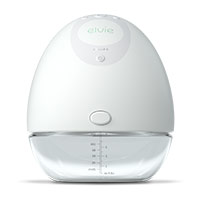
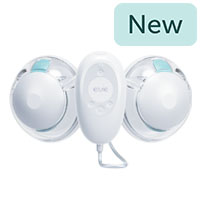
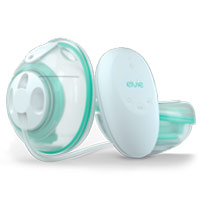
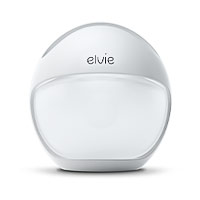
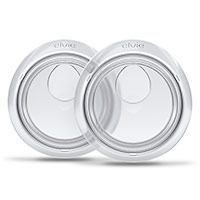
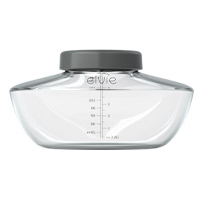
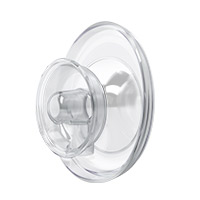

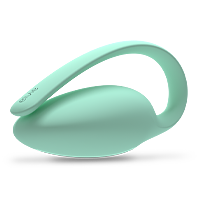
 11 minute read
11 minute read